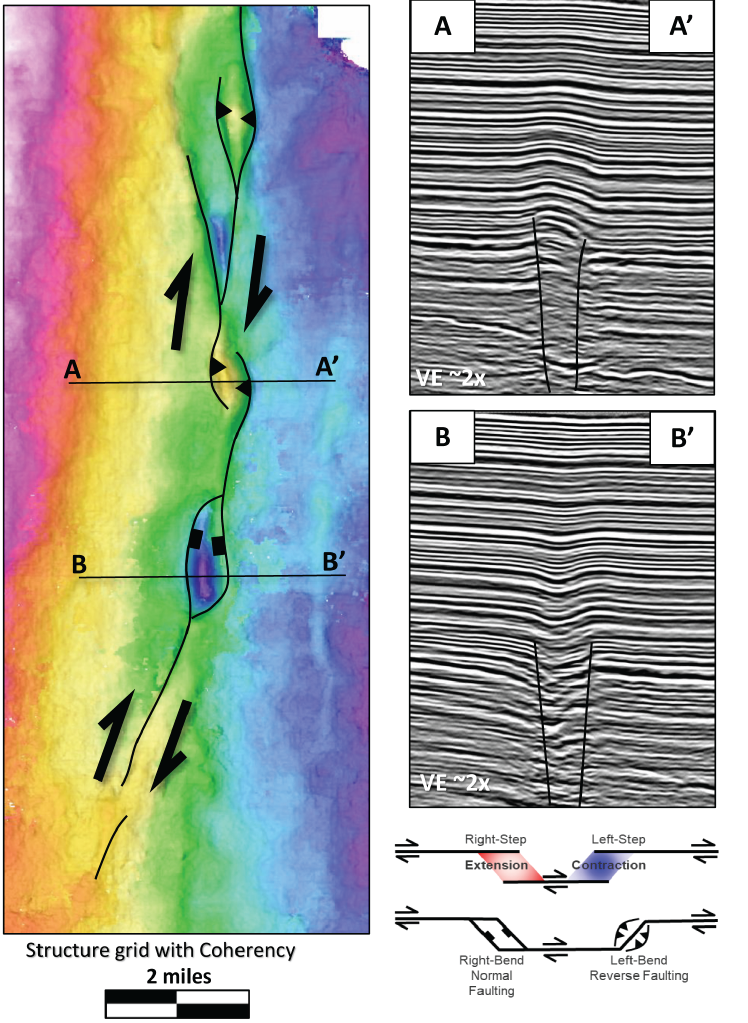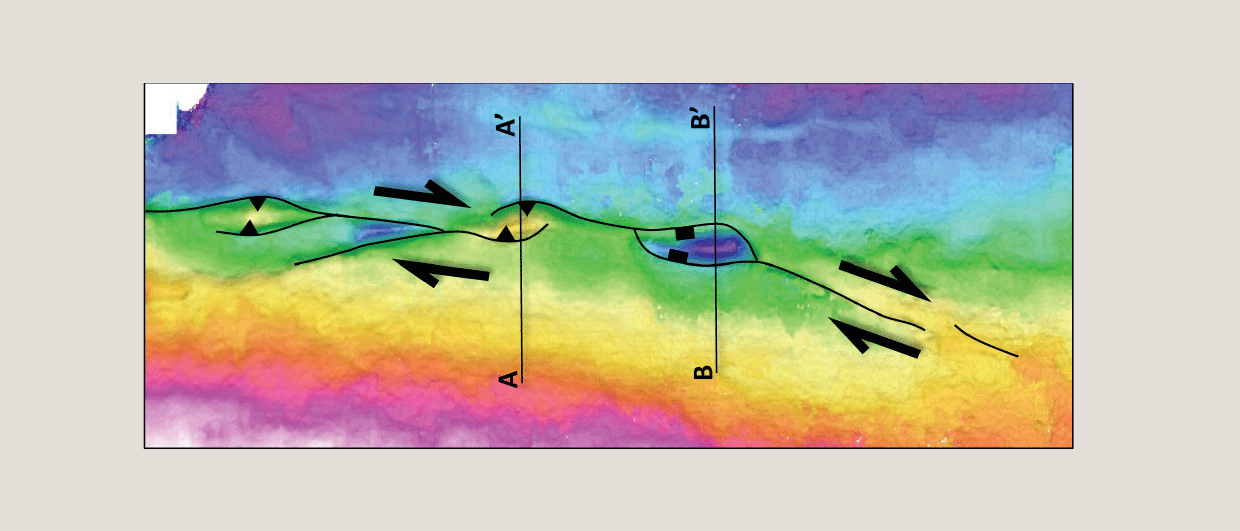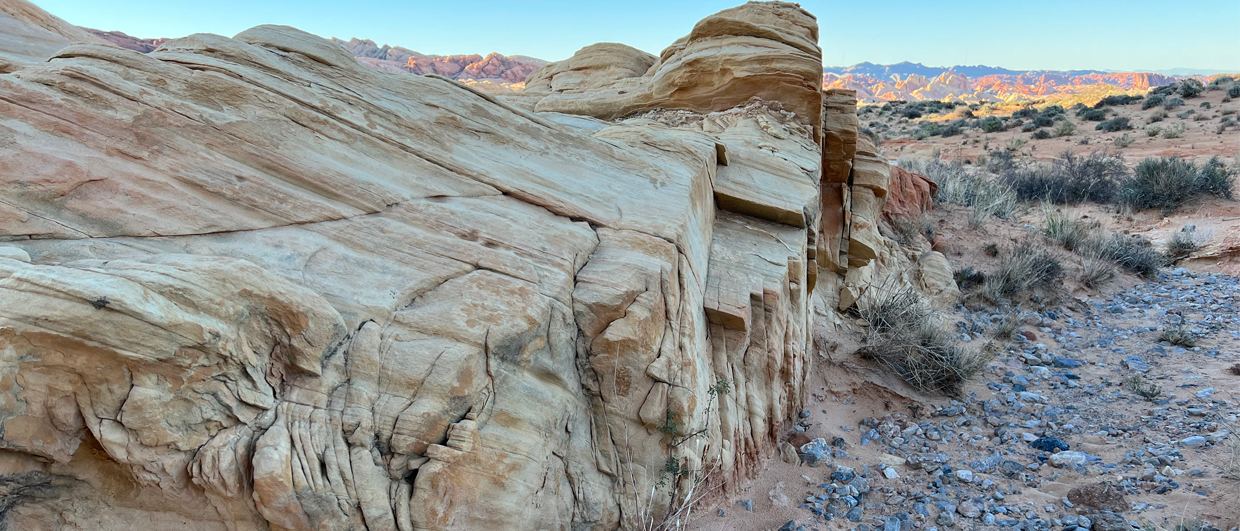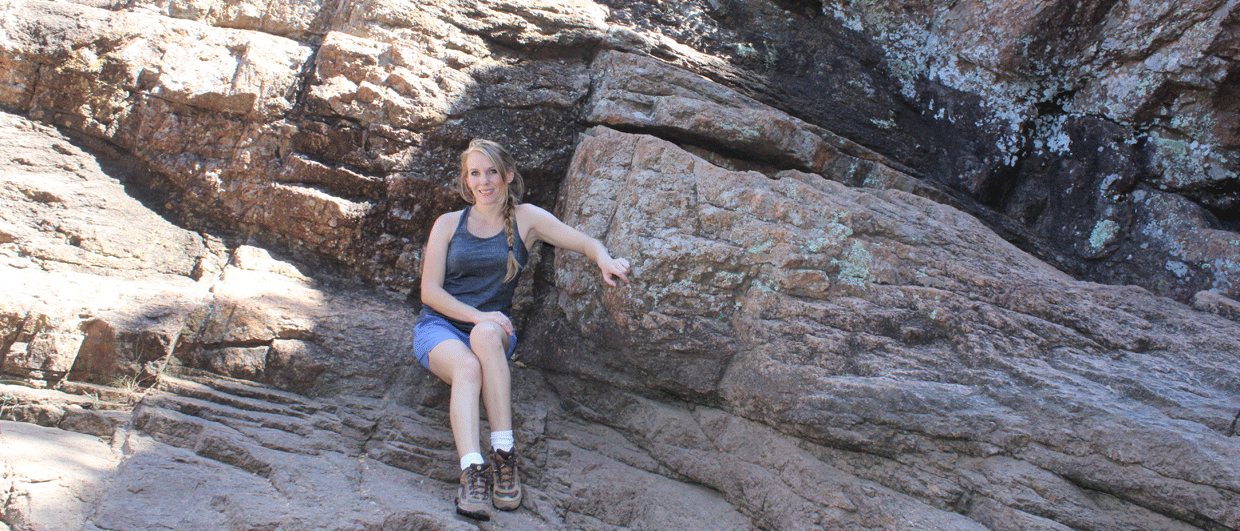Pop-ups and pull-aparts, releasing- and restraining-bends, positive- and negative-flower structures. These are the various names given to the little, and big, structures that develop along strike-slip faults. They often form when a fault bends or steps along-trend and are great kinematic indicators for determining if a strike-slip fault is left-lateral (sinistral) or right-lateral (dextral), which can often be difficult to decipher with subsurface data.
A good rule of thumb is that if the fault slip sense and step sense are the same, you will end up with a graben or extensional feature, but if it is the opposite, then you’ll end up with an anticlinal or contractional structure. So if a right-lateral strike-slip fault takes a step/ bend to the right, you’ll end up with a pull-apart graben – releasing bend, negative flower structure – between the fault segments, but if a right-lateral strike-slip fault takes a step / bend to the left, you’ll end up with a pop-up contractional structure – restraining bend, positive flower structure.
The figure shows a series of north-south oriented high-angle faults indicative of strike-slip. Where the faults step right, we see a graben-like feature in the cross-section (B-B’), but where the faults step left, we see a contractional anticline (A-A’). Both types of structures, pop-ups and pull-aparts, can occur along the same fault trend, but whether things go up or down, depends on the direction of the bend or step. The kinematics along the fault trend in the figure indicate that this is a right-lateral strike-slip system.

This rule of thumb is great for determining slip sense along strike-slip faults and can help with finding structural traps along the contractional steps where anticlinal structures can be expected. Once you can determine the slip sense – left lateral or right lateral – along a larger trend, just look for steps or bends opposite to the slip sense. These have the potential to create large anticlinal traps along regional strike-slip fault trends.





